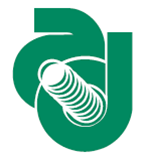Speaker
Dr
Andrea Di Simone
(ROMA2)
Description
Radiation control in the region close to the interaction point is a crucial task for the success of the SuperB experiment.
In addition to being necessary for the safe operation of the detectors, it can also contribute information to luminometers and, to some extent, to trigger and reconstruction.
The detector itself is now in its prototyping phase, with different technologies being evaluated. One important parameter to drive the choice of the detection technology are the expected radiation levels.
These could, in principle, be roughly estimated by comparing/scaling direct observations in similar colliders. However, since the operating conditions of the SuperB collider are unprecedented, the design of the interaction region has been carefully tuned in order to minimize the impact of the accelerator-related background processes on the subdetectors.
The impact of this newly designed interaction region on the radiation levels is such that all extrapolations from current experiments are unreliable.
The only possibility in the present design phase is therefore to use a detailed simulation program to infer what doses the detector will have to cope with.
We will present the current simulation effort, together with results from recent simulation campaigns, with emphasis on the interplay between simulation and design/implementation.
for the collaboration
SuperB
Authors
Dr
Andrea Di Simone
(ROMA2)
Mr
Stefano Tammaro
(ROMA2)

